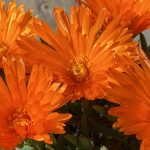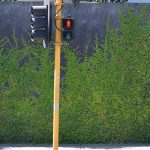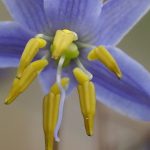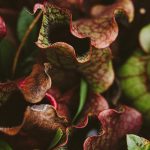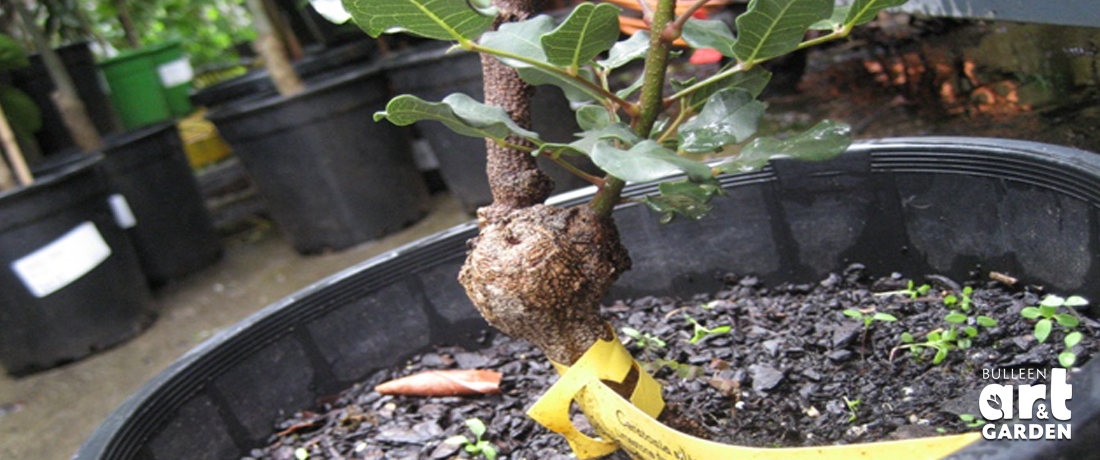
It’s easy to get yourself totally confused and muddled when immersed in the heady world of horticulture – hybrids, cultivars, cross pollination…the list of terms goes on and on. But, there is one horticultural concept that we are hearing a lot more of – grafting, and it’s one that home gardeners need to get their heads around.
Rather than an act of political deception, grafting in plant terms means physically combining the desirable properties of two (or more) plants to form one “super” plant. Confused? Think about it like this – take the legs of your favourite supermodel or actor, and attach to these the torso and head of someone else (think my head on Angelina Jolie’s legs!) It’s all about the fusion between the lower half (called the rootstock) and the upper, aerial parts (called the scion).
Grafted plants are becoming far more common in garden centres and nurseries, and there are a number of reasons for this. These include:
Dwarfing – A number of plants sold at the nursery are grafted onto dwarf rootstock (our Flying Dragon citrus and fruit trees being a prime example). This means that the rootstock actually limits the size of the tree, which is great for gardeners wanting to maximise productivity and plant diversity in limited spaces or pots. The scion is still productive, with the trees (generally) producing full-size fruit.
Toughness, hardiness and disease resistance – Next time you’re in the nursery, have a look out for some of the grafted Eremophila nivea we have on the benches. This beautiful grey foliaged plant is actually grafted onto rootstock that makes it tougher, and more tolerant of our clayey Melbourne soils. This is a fairly common reason for grafting, and a lot of Western Australian plants that we love in the eastern states are now grafted onto more tolerant rootstock.
Vigour – Some plants that can traditionally be a bit sluggish to get going are grafted onto vigorous, fast growing rootstock, meaning we don’t have to wait so long for our tree/shrub/vine. A classic example of this is the Nellie Kelly passionfruit range, grafted onto the rootstock of the vigorous Blue Passionfruit (Passiflora caerulea) to give it more vigour.
Great Grafts – How to love your grafted plant
This first key to raising a successful grafted tree should happen in the nursery as selecting a healthy, well-grafted plant is the key. In most circumstances, you should be able to see the graft union – the point where the rootstock joins the scion. In most cases (Nellie Kelly passionfruit excepted) this graft is low on the stem of the plant, just above the soil level. This graft should look healthy, show no signs of desiccation (like sap, scab or sawdust) and feel tough and stable. The top growth should be healthy, and look for signs of new growth – this indicates the graft has worked and the sap is flowing!
Once you get the plant home, plant it out to the same depth as it was in the pot, taking care NOT to cover the graft with soil or mulch, as this can lead to graft infection and eventually, failure. While you care for and love your grafted plant, remember to look at the area BELOW the graft, and monitor regularly. If you spot any new growth, leaves, shoots etc. forming below the graft union, remove these at once with sharp secateurs or a knife. Do NOT “yank” or “pull” these shoots off, this only encourages more growth! You may need to repeat this process several times over the first few years of you plants life, but it is vitally important, as any vegetation growing from below the graft union is taking valuable resources away from the top part f the plant, and has the potential to take over.
Remember how we said that rootstock was selected for its vigour? If the rootstock gets away from you, it can take hold, and you may be left with a bit of a nightmare on your hands. The Nellie Kelly passionfruit is a great example of this. Left alone and unmonitored, this rootstock WILL take off, and will eventually take over your entire garden. Blue passionfruit (P. caerulea), the Nellie Kelly rootstock, is a highly vigorous plant that will sucker and generally wreak havoc in your patch…so you must monitor and keep an eye out for any unwanted growth and remove as soon as you see it.
Multigrafts – What they are and how to look after them
Multigrafts are just that – multiple scions (aerial parts) grafted onto a single rootstock. This is most common in fruiting and productive trees, and is done to increase yield and variety from a small area, as well as increasing pollination (and thus fruiting). Let’s look at some of the multigrafted apple trees as an example – all apple trees require cross pollination with another in order to fruit, however many of us don’t have the space to plant multiple apple trees. This is where multi grafting comes in. Onto the one rootstock, two or three different but compatible varieties of apple can be grafted, meaning the rate of pollination increases, and you get more apples.
While fantastic in theory, multigrafts can be a bit of a handful for the untrained gardener. What tends to happen on multigrafted trees is that one of the grafts is ALWAYS stronger and more dominant than the rest, meaning it will grow away at a far greater speed and rate than the others. Essentially, we need to regulate this, and keep the tree under control with pruning. Prune that dominant graft back so that it is a comparable size to the other scions on the tree. You may find you are pruning this dominant graft twice as often as the other scions, and that is perfectly okay. Summer pruning the dominant graft is a good way to reduce it’s size. If this is not done, the dominant graft will end up taking over, and the other scions will eventually lose the will to live!
That aside, with some prudent pruning and rootstock monitoring grafted and multigrafted trees are super spacesavers, productive cross pollinators, and allow us to grow plants would otherwise really struggle in Melbourne. Have a look for these popular grafted varieties next time you’re at BAAG:
 Important note about plant availability. Important note about plant availability.There are hundreds of factsheets on our website provided for your information. Not all plants will be available at all times throughout the year. To confirm availability please call (03) 8850 3030 and ask for the nursery. |
Citrus “Splitzer” – Multigrafted citrus trees, perfect for smaller gardens or pots. Try the lemon/orange combo, the lime/lemon combo or, my favourite, the Tahitian Lime/Makrut Lime tree. As they say, two heads are better than one!
Flying Dwarf Citrus – Good things come in small packages, and this range gives you all your fave citrus varieties in miniature! Just like a Shetland pony, but edible!
Corymbia ficifolia grafted cultivars – Everybodies favourite flowering gum, this range of grafted C. ficifolia are great for the suburban garden. With catchy names like “Wildfire”, “Calypso” and “Sunset”, what’s not to love about these gorgeous trees? Now available in a range of designer flower colours. NB: Monitor the rootstock carefully for shoots.


